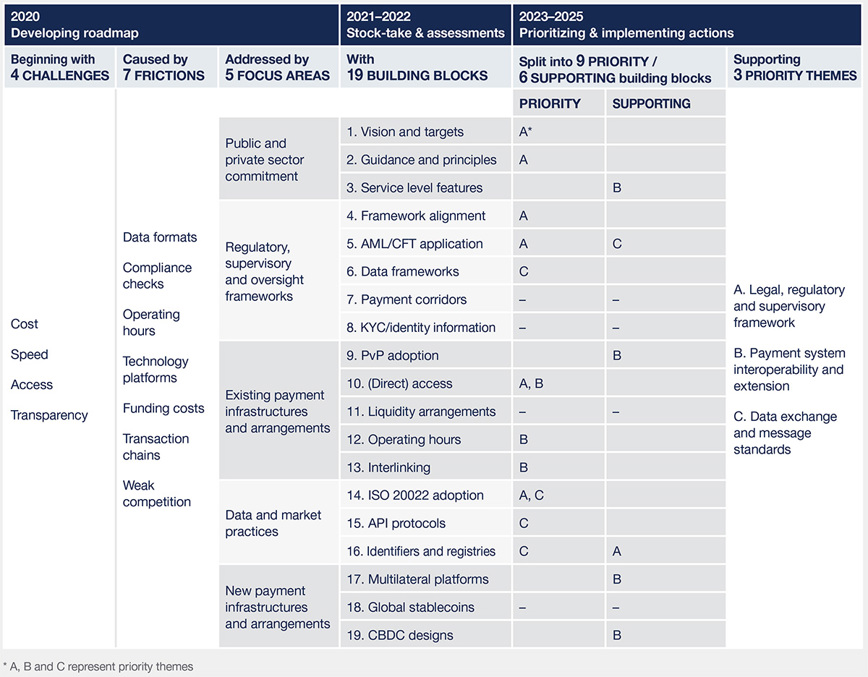FX policy 01 | The G20 cross-border roadmap: Navigating the FX lane | ShapingFX series
In 2020, the G20 launched a program to overcome long-standing challenges in cross-border payments. The program covers FX settlement risk mitigation for cross-border payments involving a currency exchange. What has been achieved over the past three years, what remains to be done, and how does the FX settlement risk mitigation offered by CLS contribute?
Hitting the road
Cross-border payments1 continue to be an integral component of today’s financial world, as trade and flows of capital, people and information have become increasingly globalized over the past decades. Although this trend slowed after the global financial crisis,2 globalization remains robust after proving its resilience through recent economic and geopolitical challenges.3
“In 2020, the G20 decided to prioritize cross-border payments and launched an unprecedented multi-year initiative to address remaining challenges.”
Cross-border payments are inherently more complex than domestic money transfers, as they rarely go directly from payor to payee. They span various regions and may involve several intermediaries and systems, as well as different legal and regulatory frameworks, technical standards and time zones.
The frictions around cross-border payment processing have been on public policy agendas for many years.4 In 2020, the G20 decided to prioritize cross-border payments and launched an unprecedented multi-year initiative to address remaining challenges5 in “the forgotten corner of the global financial plumbing”.6
Developing the roadmap (2020):
The G20 asked the Financial Stability Board (FSB), in coordination with the Committee on Payments and Market Infrastructures (CPMI) and other relevant standard-setting bodies and international organizations, to develop a roadmap to enhance cross-border payments. Work conducted over the course of 2020 and involved identifying existing challenges (speed, cost, transparency, access) and corresponding frictions,7 defining responses in the form of 19 building blocks mapped onto five focus areas,8 and establishing a high-level plan (Figure 1).9
Stock-take and assessments (2021-2022):
During its first two years, the initiative established foundational elements of the roadmap e.g., by defining quantitative targets for addressing speed, cost, transparency and access.10 The initiative also conducted analyses and provided guidance regarding standards and data frameworks11 and improving access to12 and interlinking13 payment systems, liquidity bridges,14 operating hours,15 and FX settlement risk.16 Private sector stakeholders closely collaborated in this effort.
Prioritizing and implementing actions (2023-2025):
In an effort to deliver tangible enhancements to cross-border payments by the end of 2027, a three-year prioritization plan and a public-private sector engagement model were established. Work is based on three interconnected themes that focus on selected building blocks17 (Figure 1). Under the plan, industry task forces drive ongoing public and private sector collaboration.18

1In a cross-border payment, the payor and payee reside in different jurisdictions. Cross-border payments are typically cross-currency, although a single currency is used within monetary unions (like the euro area) or where there is a common invoice currency (often the US dollar); see Bech, M., Faruqui, U, Shirakami, T. (2020) Payments without borders, BIS Quarterly Review.2Aiyar, S., Ilyina, A. (2023) Charting Globalization’s Turn to Slowbalization After Global Financial Crisis; IMF blog.3Altman, S., Bastian, C. (2023) The State of Globalization in 2023; Harvard Business Review.4For example, CPMI (2016) Correspondent Banking – final report; CPMI (2018) Cross-border retail payments.5See Communique of G20 Finance Ministers and Central Bank Governors Meeting, 22-23 February 2020, Riyadh, Saudi Arabia.6Cunliffe, J. (2020) “Cross-border payment systems have been neglected for too long”, Financial Times, 13 July 2020.7FSB (2020) Enhancing cross-border payments – Stage 1 report to the G20; FSB (2020) Enhancing cross-border payments – Stage 1 report to the G20: Technical background report.8CPMI (2020) Enhancing cross-border payments: building blocks of a global roadmap; CPMI (2020) Enhancing cross-border payments: building blocks of a globalroadmap – Technical background report.9FSB (2020) Enhancing cross-border payments – Stage 3 roadmap.10FSB (2021) Targets for addressing the four challenges of cross-border payments.11CPMI (2022) Harmonization of ISO 20022: partnering with industry for faster, cheaper, and more transparent cross-border payments; CPMI (2023) ISO 20022 harmonization requirements for enhancing cross-border payments.12CPMI (2022) Improving access to payment systems for cross-border payments: best practices for self-assessments.13CPMI (2022) Interlinking payment systems and the role of application programming interfaces: a framework for cross-border payments.14CPMI (2022) Central bank liquidity bridges for cross-border payments.15CPMI (2022) Extending and aligning payment system operating hours for cross-border payments.16CPMI (2022) Facilitating increased adoption of payment-versus-payment (PvP).17FSB (2023) G20 Roadmap for enhancing cross-border payments – priority actions for achieving the G20 targets; FSB (2022) G20 roadmap for enhancing cross-border payments – priorities for the next phase of work.18The CPMI leads the task force on cross-border payments interoperability and extension (PIE task force), and the FSB leads the task force on legal, regulatory and supervisory frameworks. CLS is a member of the CPMI-led PIE task force
